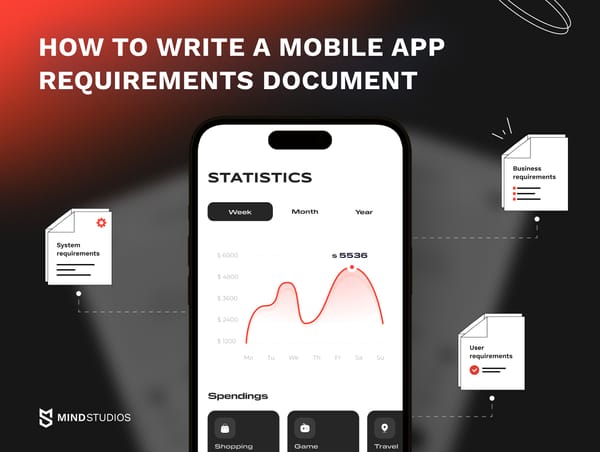Highlights
- Today, Millennials and Gen Z are turning to reading apps, with the biggest part of them reading even more than previous generations.
- Busy lifestyles of people are driving the growth of ebook reader app development, which creates a blooming market for digital reading apps.
- Ebook application development not only helps you tap into a growing market but also gives readers comfy access to books, and offers authors and publishers a powerful platform to both reach and engage with an audience.
Millennials and Gen Z read more than their parents and grandparents used to: on average, about 80% of respondents aged 18 to 49 in the US have read at least one book in 2021.
Young people are busy, and they crave more reading on the go; therefore, the market for reading apps is flourishing.
However, not all the ebook apps become successful. As David Pogue, an American technology and science writer, TV presenter, and correspondent for CBS, says:
“The Kindle is the most successful electronic book-reading tablet so far, but that’s not saying much; Silicon Valley is littered with the corpses of e-book reader projects.”
At Mind Studios, we have experience in ebook development for a local niche book publisher. The app was solely focused on books written by Black authors and featuring Black protagonists. Here are some of the achievements this app got after its release:
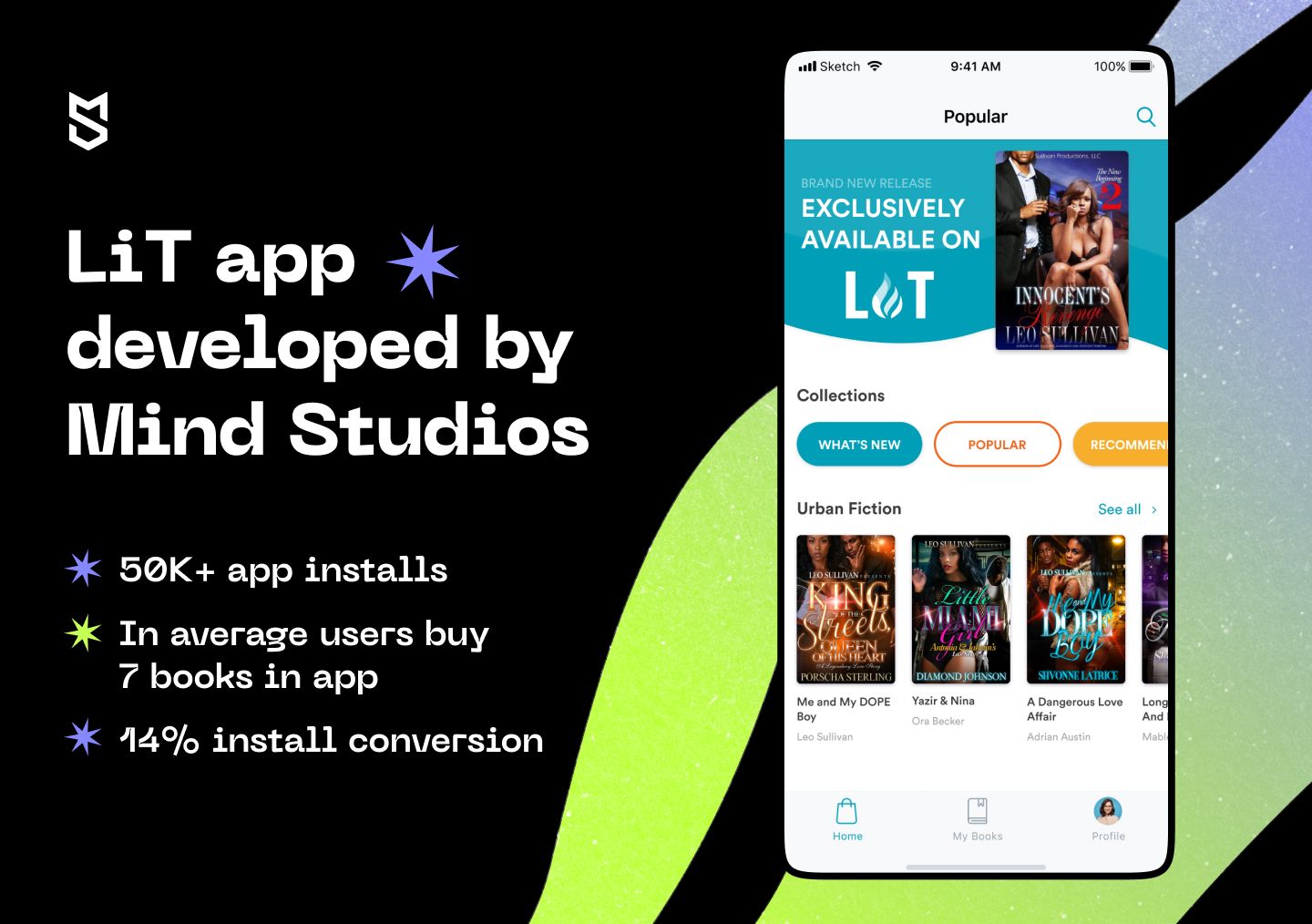
So, if you want to tap into this niche and are looking for a reliable IT partner to transform your idea into reality, don’t hesitate to contact us.
Now, let’s talk about which types of ebook reader apps you want to create.
Define your needs: Main types of ebook reader apps
There are two types of ebook reading apps, and although they’re bundled together in all the “best eReader apps” articles and reviews targeted at users, from the perspective of developers and app owners they focus on completely different things. Here they are:
- Actual ebook reading apps
- Apps for online ebook stores and publishers
When you contact a mobile app development company or research how to make an ebook reader app, you’ll find that the first stage is always business analysis. Before you decide on the features to include in your app, you first need to determine your app’s focus.
Development-wise, the focus is where the biggest difference between the two types of reading apps lies.
Developing an ebook reading app
A traditional ereader app is, in a nutshell, a simple app that allows you to read documents in digital formats like PDF, EPUB, and FB2. For example, Moon+ and Cool Reader. Creating an ebook app like these will be miles away from building the second type of reading app, despite having several similar features.
If you wish to create your own ebook app that’s just that — a reader app, with no ebook store attached — your focus will need to be on the functionality. Is there a feature or a set of features users would like to have in a reading app that no one has implemented yet? Or maybe there’s an issue with the user experience that all major e-readers have that you can offer a solution to?
If you decide to outsource your ebook reader mobile app development, a professional project manager can help you conduct a thorough business analysis and discover the answers to the most important questions:
- What is lacking in most existing ebook reading apps?
- Can you offer these things?
- Who are your biggest competitors on the market?
- What should your unique value proposition be?
- Should you start by creating an ebook app for iPhone or Android?
You can put all the most vital information in a Lean Canvas, a tool for entrepreneurs to organize information and build a workable visual business plan. From there, you can build your own ereader app with higher chances of success.
Developing an online ebook store app
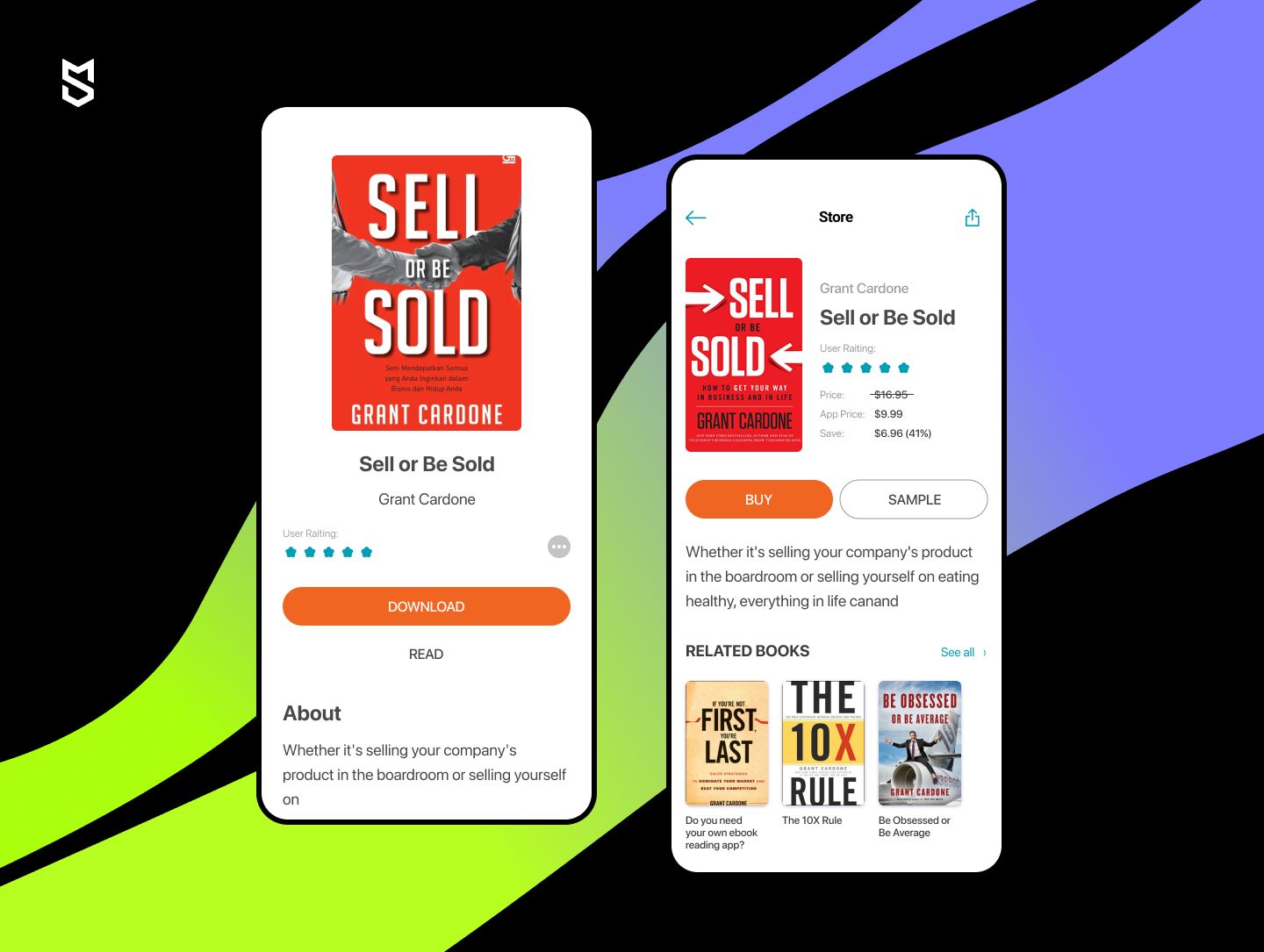
The second type of ebook reader apps — and the one we’ll be focusing on — is an app for an ebook store or a publisher.
Everyone knows these apps even better than the first type: Amazon has its own Kindle book reading app for iOS and Android, as does Barnes & Noble (the B&N Nook app) and basically every major bookseller whose products include digital copies of books. Apple and Google have their own ebook stores as well.
When deciding how to make a mobile app like Kindle, if you’re a publisher or a bookstore owner who wants to sell their books in a digital format via their own e-reader app, your Lean Canvas will look different from that of a simple e-reader app, since you’ll have a different focus.
Products like Amazon Kindle are first and foremost bookstores, and the focus of developing a Kindle-like app is less on the reading functionality and more on the store content.
What should you start from?
In this section, we’d like to go over the ebook reader mobile app development processes you’ll most likely encounter if you decide to enlist ebook app development services from an outsourcing company like Mind Studios.
Idea validation
During the initial stage, we recommend conducting idea validation. At Mind Studios, it is a process of assessing your ideas for validity through market research. By understanding your market, competitors, and target audience, you will be able to see the true potential of your app as well as whether your idea will really work out.
This stage will decrease potential risks and will give a tangible proof to investors if you are searching for funding for your app.
Choose your niche
Unless yours is an established publishing house with an existing audience, it’s sensible to begin within a single niche when you decide to make an ebook app.
With LiT, our niche was books by Black authors with Black protagonists. It’s a fairly wide niche, as it includes a multitude of genres, from romance to mystery, action and adventure, detectives, etc. But at the same time, it’s limited and focused.
Your niche can be whatever you want it to be. It can be defined by a genre, theme, or setting, the ethnicity of authors or characters, age, gender, or anything else you come up with. The key is to find a niche with the potential for a community of readers.
Find out who your readers are
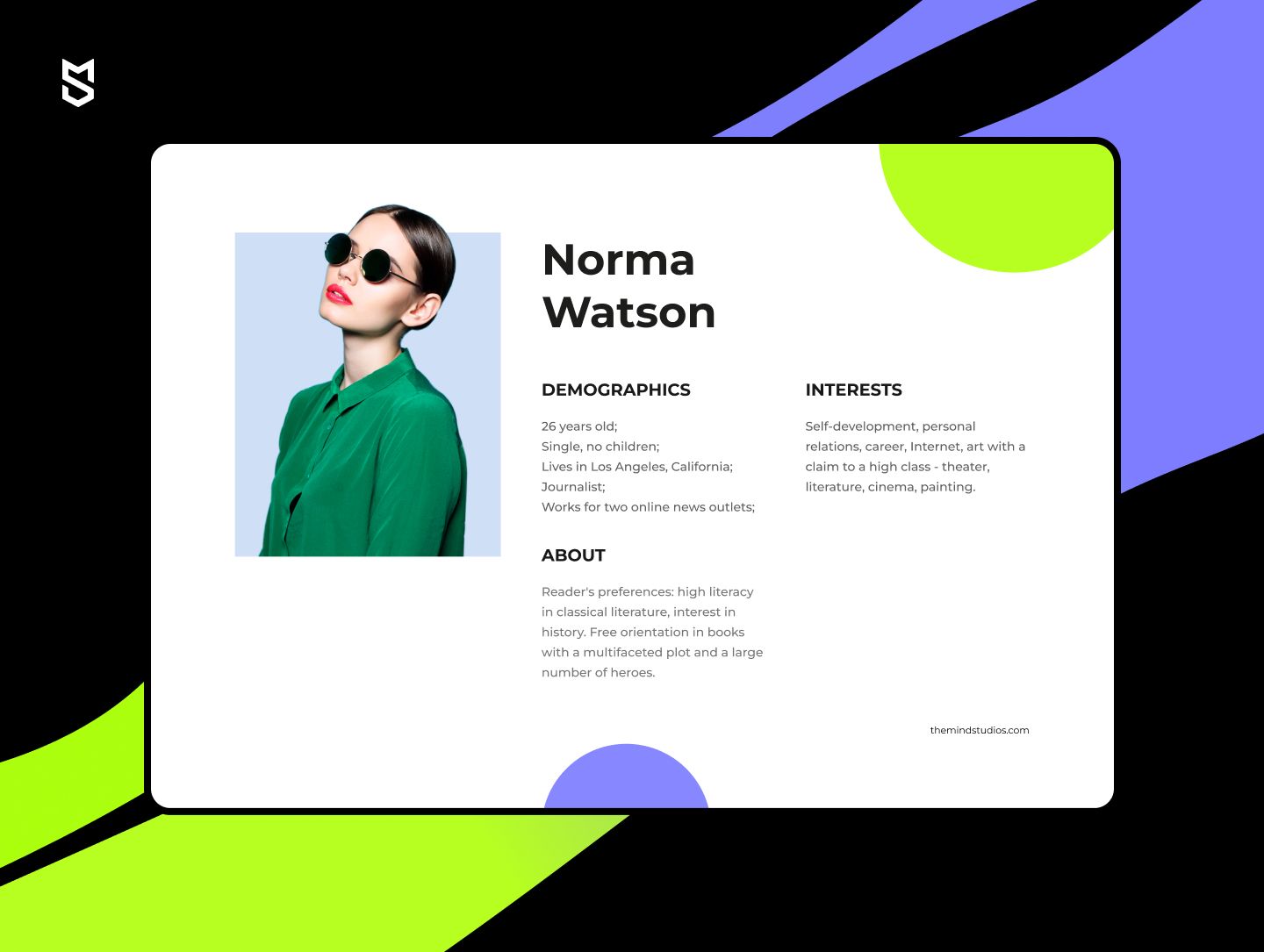
To run a successful marketing campaign, you need to know your target audience. At Mind Studios, we use ICP definition to identify users, their expectations, and, thus, choose the needed features for the app.
It’s not as straightforward as it may seem! For example, not only teens read teen literature; not only Black people love to read stories with Black protagonists. One doesn’t need to be part of a certain culture to be interested in it. You’ll need to conduct thorough research to find the target audience for your mobile app.
However, your users will likely have common traits besides the books they read:
- How much do they read, say, monthly?
- How often do they read from an app?
- Are digital books their preferred reading format?
- How much money are they willing to spend on reading the books you sell?
- What other apps, especially reading apps, do they use?
These are just a few questions from the top of this author’s head; a thorough analysis with a professional project manager will reveal more about your ebook reader development. If you want to get real answers, contact our expert team at Mind Studios.
By answering these questions, you’ll be able to create a user persona — a generalized user to whom you will offer your app. Without a proper user persona, your app development and marketing efforts will be spread too thin in order to cover too wide an audience, decreasing your chances to reach a solid chunk of users who will convert from prospects to loyal customers.
Select a monetization model
There are two traditional ways to monetize an app for an online bookstore: 1) take a percentage from the books you sell, or 2) offer a subscription. Most current apps, including Kindle, use a combination of these systems.
Kindle has traditional book sales alongside Kindle Unlimited, a monthly subscription that allows unlimited reading (hence the name) albeit from a specific list of books and magazines. Granted, the list is quite impressive and covers all genres.
The tricky issue with subscriptions in book selling apps, though, is to properly distribute the earnings. If you’re not selling your own books (or at least not only your own books), you’ll need to pay a royalty to the authors, which can be set based on a variety of factors in the case of a subscription: number of book downloads, number of pages read, etc. Consider this when you decide on the monetization model.
Online bookstore apps can also make use of ads, although this business model is more popular in regular non-store reading apps.
Build an MVP for your ebook reading app
To get the best and richest feedback for your ebook reader development, as well as to save on said development costs, we usually recommend launching a somewhat abridged version of your app. A minimum viable product (MVP) is one such version.
With core functionality in place, and with a certain number of books in your store, you’ll be able to better understand your audience and tweak any elements of the app to increase loyalty.
Besides, an MVP means you’ll be able to start earning revenue with the app earlier, which will help you cover the future ebook reader app development stages.
Have ideas for your ebook app that you want to bring to life? Contact us to discuss your project and get a quote.
Test everything to perfection
It’s hard to overestimate the importance of testing in any kind of app, but in Kindle clone app development — an app with a store selling products — it’s even more vital.
People buy books to keep, and having bugs or issues with user experience will surely disrupt this experience, making them abandon your store and even return the books. This can harm your reputation greatly.
Additionally, with competitors like Kindle, there’s always an app for your users to go. This is why you need to dedicate ample time to testing each of your ebook app features to ensure the experience is smooth.
Custom ebook app features to include
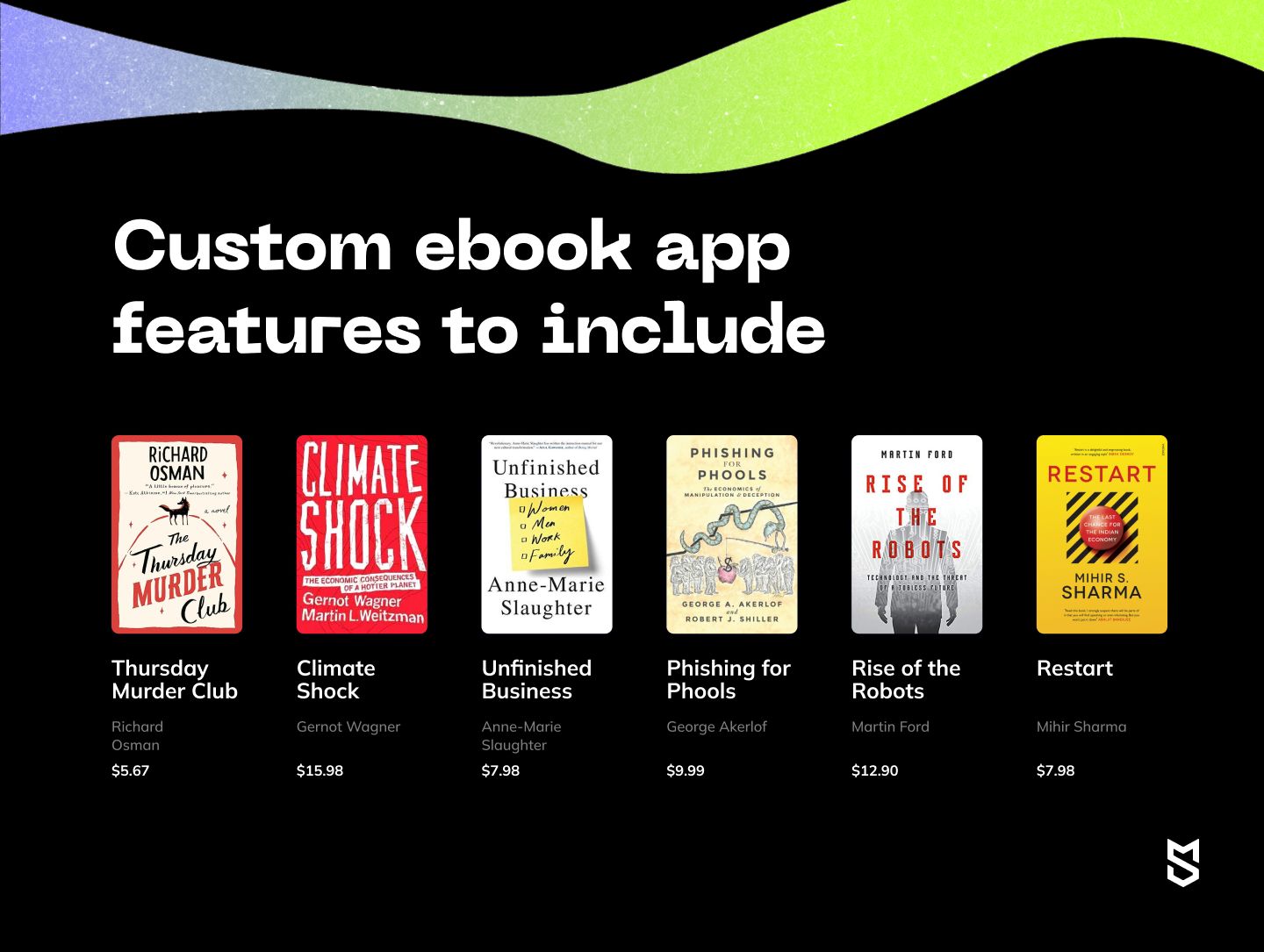
The list of features required in an ebook reader mobile app development (for iPhone or Android) so it stands a fighting chance in today’s market looks something like this:
Store listings
This one’s a given if we’re talking about a Kindle-like reading app. If you’ve got an online store of any kind, it needs product listings. The important thing with listings is to make their design as user-friendly as possible, with engaging descriptions and easy-to-find purchase buttons.
Mind Studios’ insight: Due to the changes in Google’s and AppStore’s policies in recent years, some retailer apps — Kindle included — changed their rules as to store listings. Namely, to circumvent the rather high fees the app stores require from in-app purchases, Kindle now asks readers to buy books via the Amazon website instead of in the Kindle app. If you decide to follow in their footsteps, you’ll need to think about proper UX for store listings.
Search, categories, and filters
It’s essential to allow users to effortlessly navigate the store to find what they need, be it a specific book or author. But more than that, it’s vital to create an organized system of tags by which your readers will be able to find new books to read within your niche. These tags will, of course, depend on the niche. They can be genres, sub-genres, book ratings, story settings, etc.
User library
The user library is another feature to pay close attention to when developing your ebook reader app. As with a store, your app needs some kind of organization system for books a user has bought, downloaded, and read. For example, Amazon’s Kindle allows users to sort content into the following categories:
- Books, book samples, and magazines
- Downloaded to the device vs bought but stored on the server
- Read vs unread
In this author’s opinion, it would be nice if Kindle had an option to navigate a library by genre, the same as in the store. Avid readers will surely appreciate that, so you might consider this feature for your ebook reader app.
Downloading books
To save on internet traffic and make reading possible even when there’s no connection, allow users to download books to their devices. However, do take precautions against downloading books as plain text — this will lead to piracy and your loss of income.
Ebook reader functionality
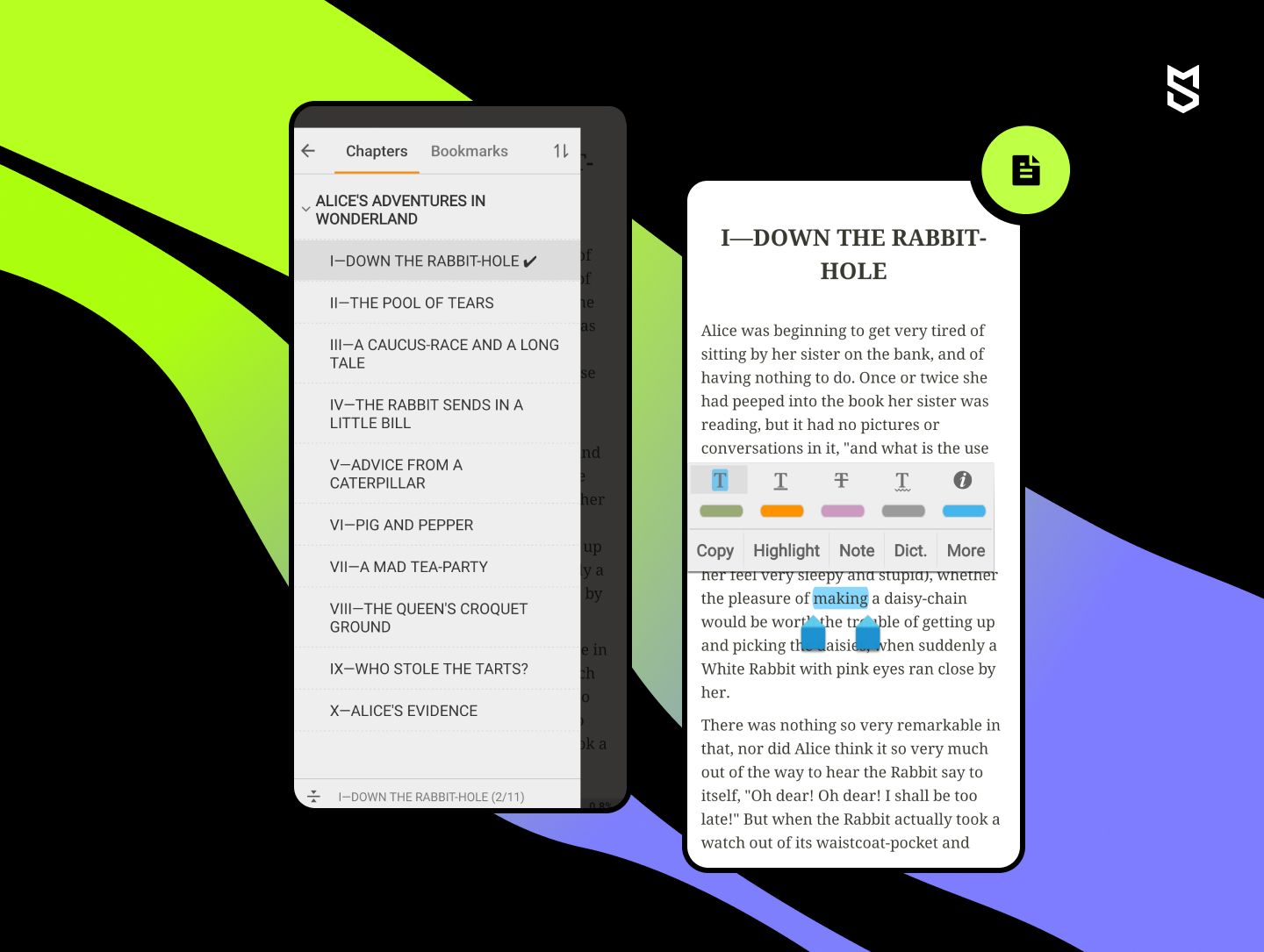
An ebook reader will also need a set of features for actually reading books. These features are shared with the first type of ebook reading apps we mentioned at the beginning:
- Book navigation via table of contents, search by word, progress bar
- Bookmarks
- Highlights and notes
- Dictionary and/or translation
- Font adjustment: size, color, typeface
- Page adjustments: color, brightness, texture (Some apps offer collections of textures for the background, like old paper or stained pages, which can be nice for setting the mood.)
- Low blue light settings and a night theme for eyesight protection
- Sync progress between devices (in case users read from multiple devices, like a smartphone when commuting and a tablet or eReader when at home)
Adding a unique feature to the reading functionality isn’t a bad idea in general, but with a store app, the focus usually lies on the store functionality and content.
Uploading content
A number of ebook store apps with reading functionality also allow users to upload their own files to read. This is a very beneficial feature, as it eliminates the need for non-store reading apps, freeing device storage space and making users interact more with your app. Google Play Books, for example, allows users to upload PDF files, though nowadays, the variety of formats available is much wider, so the more of them your app supports, the better.
Gamification
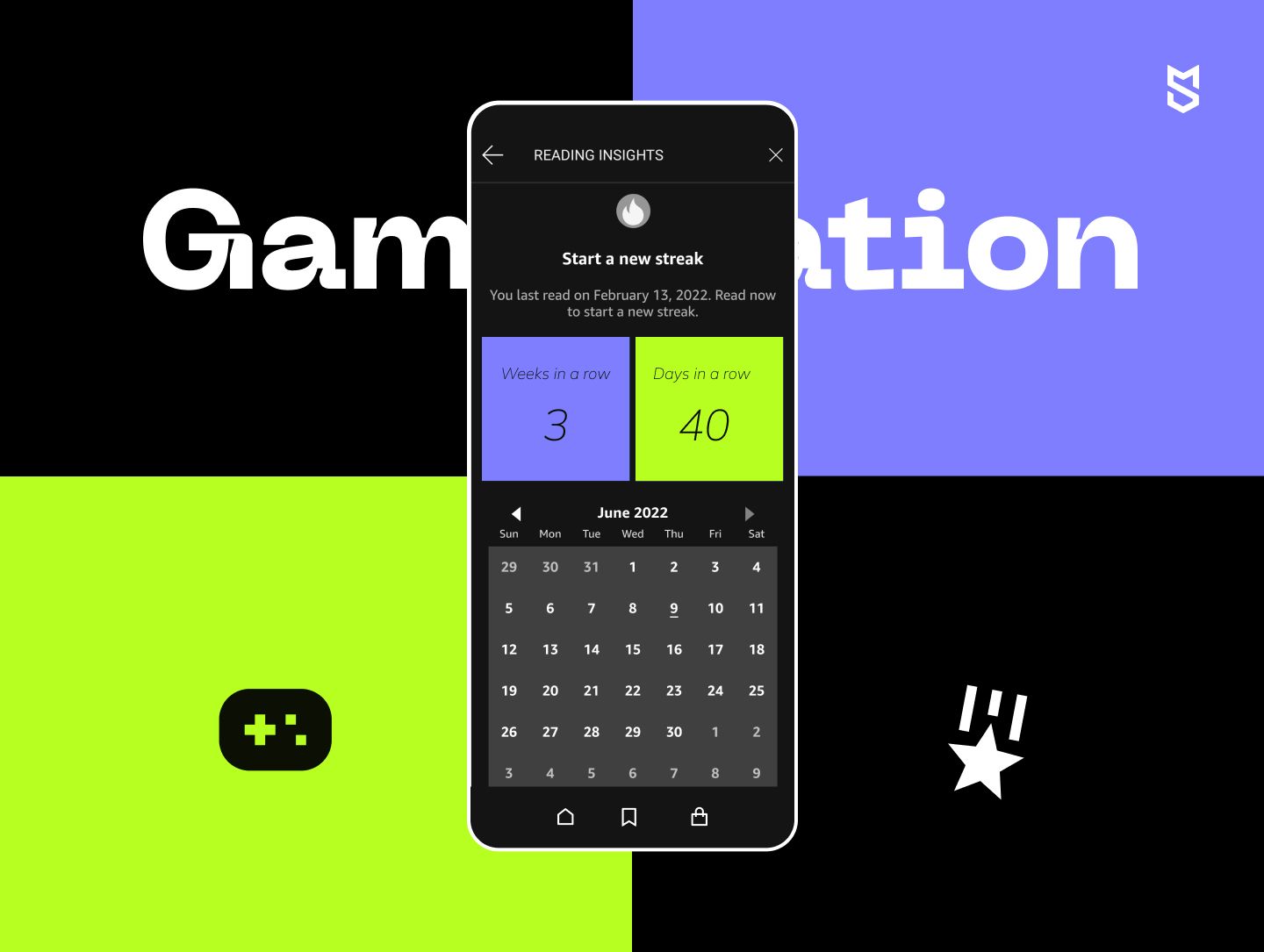
While reading is entertainment enough for avid readers, adding gamified elements to your app will increase engagement and make users come back. One of the popular ways to make an engaging ebook app is by offering rewards for reading more. Rewards can be badges that users can share on social media, weekly/monthly/yearly statistics, or a leaderboard and discounts for a certain number of top users.
Social sharing and in-app community feature
After reading a book, most readers would like to share their thoughts with friends or like-minded individuals, and you can make this easier for them by integrating a connection with popular social networks like Facebook and X (formerly Twitter) as well as with social networks focused on the reading community, like Goodreads.
Kindle integrates with Goodreads since both are owned by Amazon, and users’ reviews, book ratings, notes, and highlights are automatically copied to their Goodreads accounts and the book’s Amazon page. If you have a similar community in your niche, consider integrating it into your app as well.
In-app community features include comments and rating users might want to leave on books they’ve read.
Payment functionality
As we’re talking about how to create an ebook app like Kindle, i.e. an online bookstore, the obvious feature you’ll need is the possibility for users to pay for books and/or subscriptions. You’ll need to integrate a payment gateway to provide a secure method of online payment and a high level of protection for customers’ financial data, which will likely be stored in customer profiles. This is important whether you decide to allow buying books from the app or via a web version of your online bookstore.
There’s also an option to not store data and ask users to provide their data each time — Book Depository, a now-defunct online retailer of physical books, did this — but it will most certainly turn off a number of users or at least lower their purchase rate since it’s a hassle.
Extra feature: Audiobooks
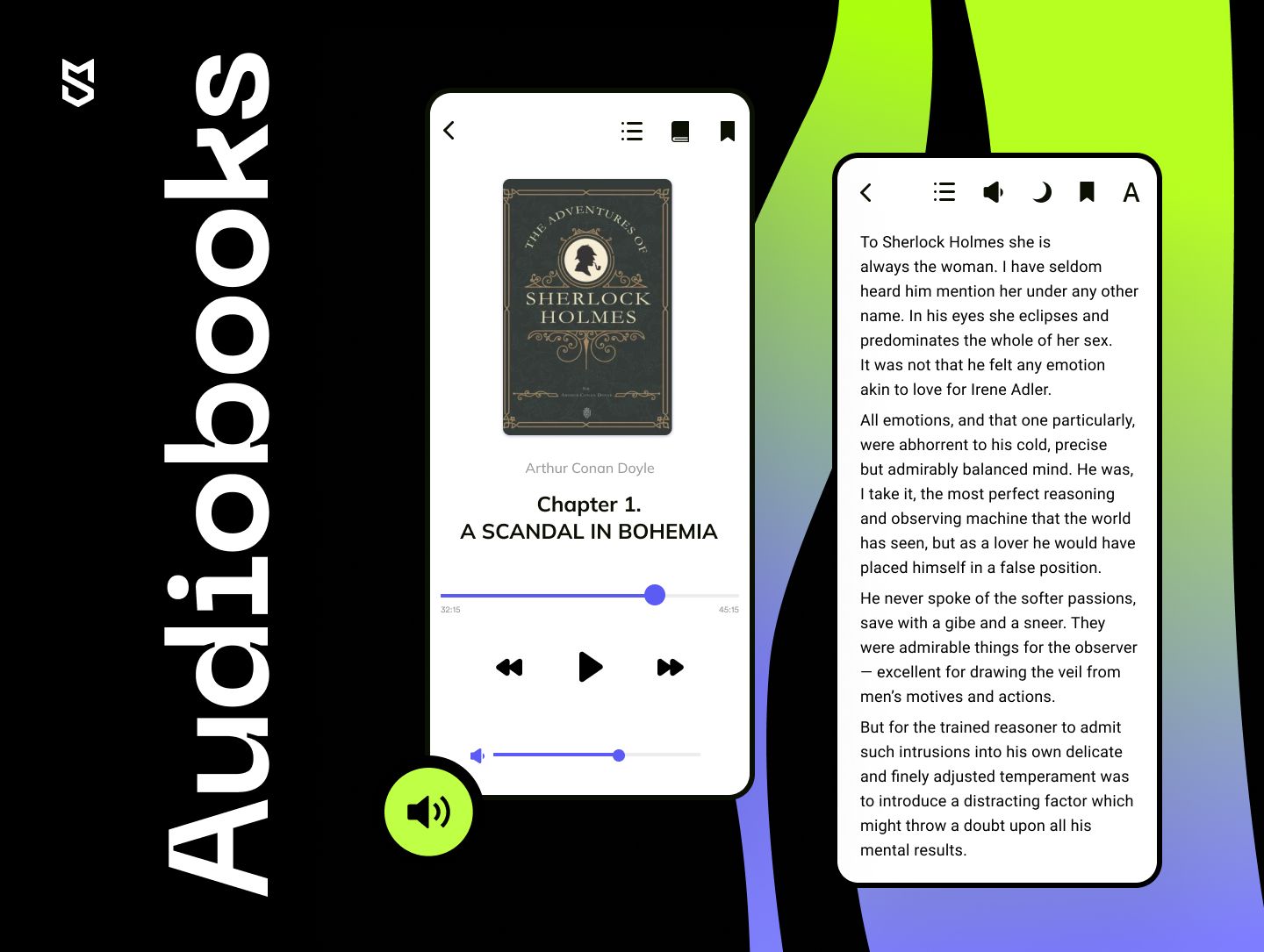
Audiobooks have gained tremendous popularity in the ebook reader mobile app development industry, especially among working adults and students who want to “read” (i.e. listen to) books as they walk to the office/school, ride public transport, or drive. Among big names in the industry, the companies that incorporated this feature into the main ereader apps are Kobo Books, B&N Nook, Apple Books, and Google Play Books. Amazon, however, has a separate Audible app for audiobooks.
If you have the opportunity to order professional narration of books in your store, this might be your winning feature since not many reading apps, especially niche ones, have audiobooks in their libraries.
However, if that’s somewhat beyond your budget for the moment, a somewhat similar feature (that’s sometimes even preferred by users) is text-to-speech conversion. Modern AI-backed text-to-speech engines can provide a decent level of narration. Some users even choose text-to-speech over professional human narration, since it avoids the subjective interpretation conferred by a reader's enunciation and tone. Besides, with text-to-speech, you can offer your readers a selection of voices.
If you are ready to create a top-notch ebook app but still don’t know which features to include, get in touch with Mind Studios for guidance and support.
Expert tips from Mind Studios
Having worked with many businesses across the globe, we have come up with a working roadmap that is also a foundation that you have to follow to create an app that meets the needs of your target audience and stands out from the competitors.
Here is a brief checklist:
- Go for tailored solutions. Developing a custom solution with tailored infrastructure can help you fit the unique needs and preferences of the users while providing a personalized and engaging experience.
- Make user experience your priority. Make the app’s design intuitive and user-friendly, with seamless navigation. This will help improve users’ satisfaction and retention.
- Always ensure security. Implementing robust encryption and security measures to protect sensitive user data and content is a must, as it helps build trust and long-term relationships with your users.
- Integrate analytics. To understand user preferences and behavior, don’t only make assumptions but go for analytics. It allows for continuous improvement and targeted content recommendations.
- Don’t forget about offline access. Make sure your users can download and read the books offline. This will help you engage another segment of the users – those who prefer on-the-go reading without internet access.
- Think of adding extra value. To differentiate your app from the rest, you should consider adding extra features and activity like audiobook support, text-to-speech, or gamification features.
- Consider scalability. Design your app so that it handles future growth. This will help you better manage expanding user base and future features without affecting the performance of the app.
Ebook app design best practices
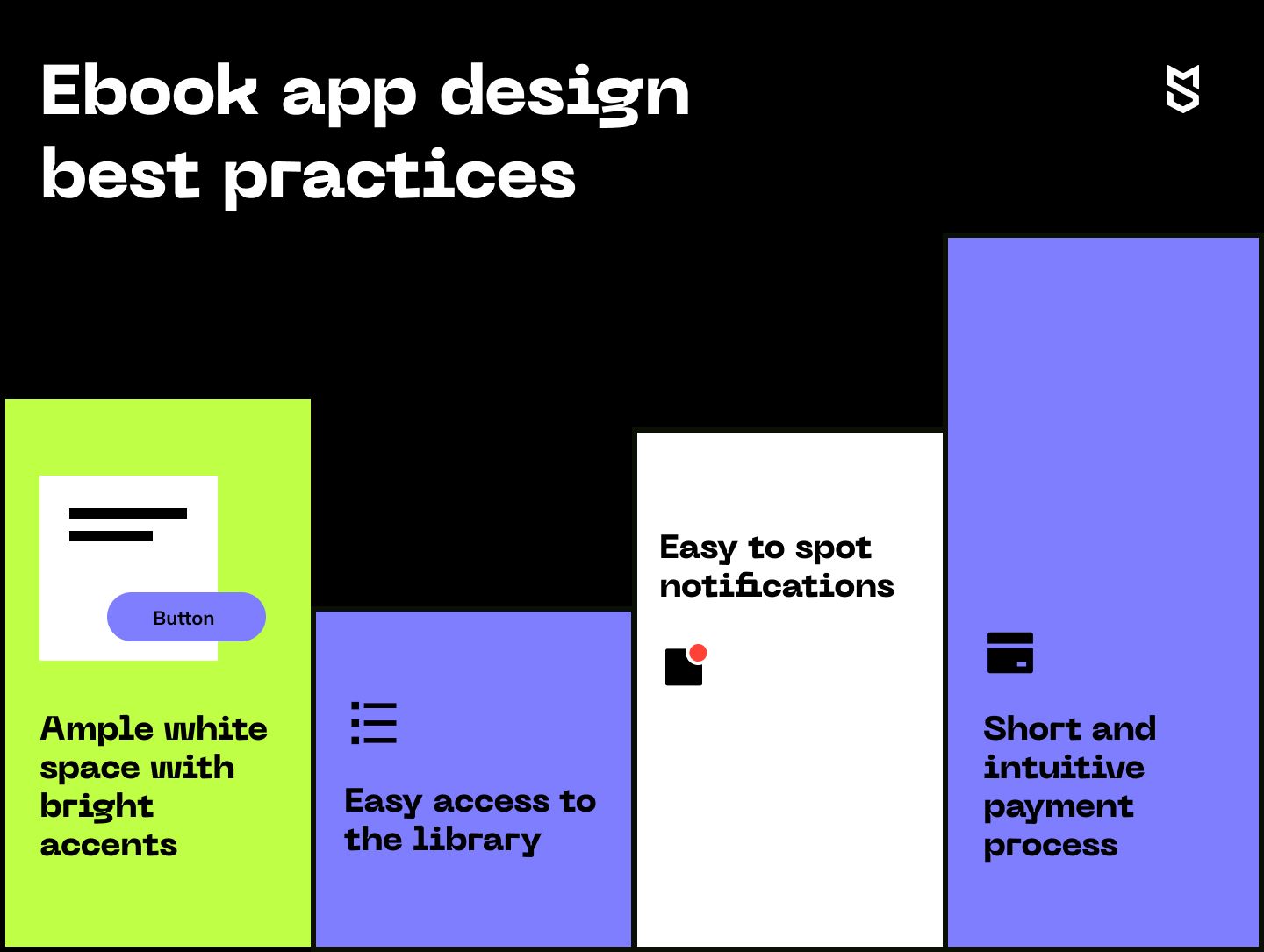
Going into Kindle clone app development, you need to pay careful attention to UI and UX design — just like the Kindle developers did.
While it has some shortcomings users sometimes complain about, the Kindle app is one of the best when it comes to ebook store design, so it’s a sensible solution to take a page out of its book when it comes to UX.
Ample white space with bright accents
Elements in an app aimed at selling stuff should be easy to spot so that users make purchases faster — the longer the user searches for the buy button, the higher the chances they reconsider. That’s why we recommend having ample space around important elements like Library and Store sections, the cart, and a shortcut to a fuller menu. White space will make the element more noticeable.
The Kindle app’s interface is mostly white (or black, in a dark theme), with the Add to list button the brightest spot on the screen besides the book cover. This makes for an attention grabber, prompting users to buy the book.
Easy access to the library
It’s custom for reading app development to have Library and Last book icons on the main panel, right next to the Store and Home icons. Furthermore, many popular ebook stores with reading functionality — for example, Kindle and Glose — have Your Library section shortcut right at the center of a launching screen, promoting more interaction with the app and higher user-friendliness. After all, users buy books to read them, so sticking a store in them is counter-intuitive.
At the same time, the store features follow right after, with sections offering books based on readers’ tastes and preferences.
Easy to spot notifications
To entice users to buy more books, create notifications when a new book comes out that might interest them:
- A new book with a similar setting
- A new book by the author they’ve already bought
- A chart of books with a similar plot
- A book in the same genre
Mind Studios’ insight: Notifications of this kind should be implemented both as push notifications and inside the app in a noticeable way. Looking back at the Kindle app as an example: the chime icon is present on the main screen and the number of notifications is highlighted in red, which helps it stand out.
Short and intuitive payment process
It’s not a secret that people are prone to spontaneous purchases. Oftentimes, the only thing stopping a person from buying another product is a long and cumbersome payment process.
To avoid this, we highly recommend implementing one-tap payments. In this case, you’ll need to either keep the users’ card details in the app or implement quick payments with Google and Apple Pay services.
These payment options will make the payment process faster and easier, not giving users time to reconsider.
Mind Studios’ insight: Do keep in mind, though, the fee app stores take! The reason the Kindle app won’t allow users to make purchases directly from the app is that they’re trying to avoid the fees. Kindle books can be bought with a single tap on the Amazon website, so consider also building a web version of your ebook store.
Ebook mobile reader app development tech stack
The tech stack to build your own ereader will look something like the following:
| iOS app | Swift |
| Android app | Kotlin, Java |
| Backend | Ruby on Rails, Elixir |
| Storage | Amazon S3 |
| Content protection | DRM |
| Caching / CDN | Cloudflare, OVH CDN |
| Push notifications | Firebase SDK, APNs |
| Payment functionality | Stripe, PayPal |
| Audiobook processing | AWS Lambda |
| Livestreaming | Amazon Live Streaming AWS |
How much does it cost to create an ebook app?
To estimate the cost to make an ebook reader mobile app, let’s first pull together a virtual team of ebook application developers. At the minimum, you’ll need:
- 1 project manager
- 1 UI/UX designer
- 1–2 developers for each platform (iOS, Android)
- 1 backend developer
- 1–2 QA specialists
Here’s a rundown of processes that affect the ebook app development cost (per platform):
| Stage | Time required | Cost, USD |
|---|---|---|
| Discovery / Idea validation | 80-100 h | 3600-4500 |
| Competitor research | 24-40 h | 1440-1800 |
| Prototyping and UI/UX design | 160-200 h | 7200-9000 |
| Developing an MVP | ||
| Onboarding | 40–64 h | 1800–2880 |
| User profile | 24–40 h | 1080–1800 |
| Store listings | 16–24 h | 720–1080 |
| Search, categories, filters | 24–40 h | 1080–1800 |
| User library | 16–20 h | 720–900 |
| Ebook reader functionality | 100–160 h | 4500–7200 |
| Admin panel (for uploading content, monitoring performance, managing payments) | 80–100 h | 3600–4500 |
| Payment functionality | 32–48 h | 1440–2160 |
| Social sharing | 16–24 h | 720–1080 |
| Testing | 174–260 h | 7830–11700 |
| Project management | 120–200 h | 5400–9000 |
Based on this list of specialists, the list of features above, and our experience with the LiT Ebook Reader App, an app development company will need a minimum of 6 months to release an MVP (minimum viable product) for an online ebook store app. The cost of such an MVP will start at about $55,000 for one platform and will increase with the difficulty and number of features. The cost will also depend on the location of the company you decide to outsource to. Mobile developers in the US, for example, are the most expensive to hire.
Challenges of ebook application development
Developing an ebook app comes with a share of challenges that require careful consideration.
In this block, we have addressed some of the common ones, as well as given effective strategies and tips on how to overcome them.
Piracy
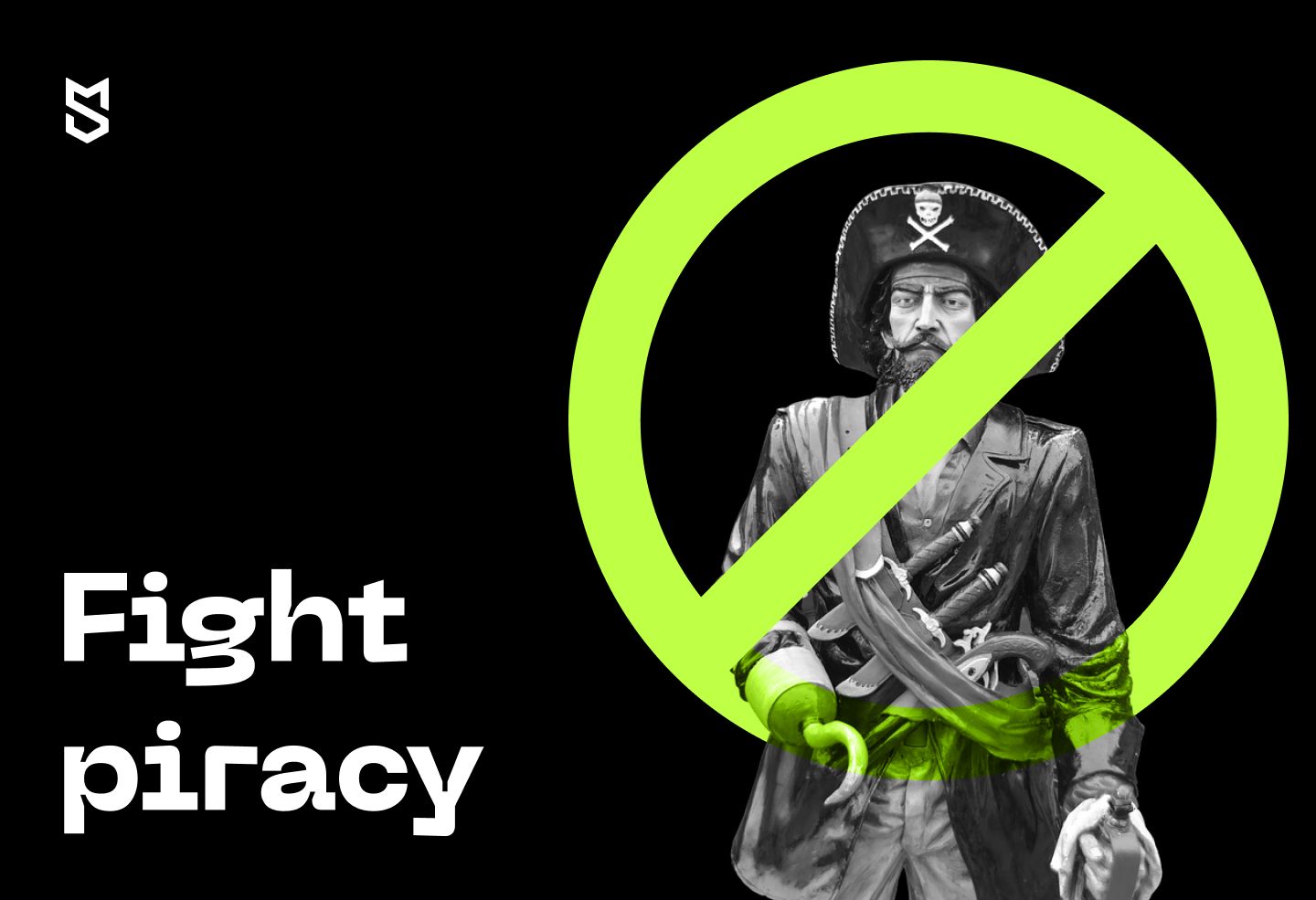
You don’t want the books in your app to be downloaded as unprotected files and distributed outside your app. Fortunately, today’s technology offers developers tools to make pirating books a challenge that not everyone will tackle!
Besides legal protection, which isn’t your app developers’ field of expertise, the best way to protect the books in your app is to encrypt them. That’s what Amazon and other publishers of digital content do.
Solution: We recommend implementing the latest algorithms like AES encryption. This way, you can make it so that downloaded books can only be read with a decryption key contained in your app. Hence, these books will be useless for reselling in other places and can’t be read in apps other than yours. Plus, consider regular updates to encryption protocols, as they will help you stay ahead of potential piracy methods.
Mind Studios’ recommendation: At Mind Studios, we also highly recommend adopting a multi-layer encryption system that consists of both server- and client-side encryption. This way, even if the file was intercepted during transmission, it will still remain protected. You can also go for a digital watermarking to track any source of potential leaks.
Royalty distribution
When publishing ebooks by multiple authors, you need to consider a system to track multiple factors regarding book selling:
- How many times the books was bought
- Whether the book was ever returned and for what reason
In the case of a subscription model for monetization, you might also need to track other metrics:
- How many users read the book to the end
- If users dropped the book than at what point
- What are the book ratings and comments from readers
Solution: Adopting comprehensive tracking and analysis of your metrics is vital. The data you get will be necessary for proper royalty distribution among authors, and implementing such metric tracking and analysis will be your key instrument in dealing with authors. This data will also be of help to you for content curation: you’ll know which books and authors are popular on your platform.
Mind Studios’ recommendation: To get the real-time view on your book performance, we recommend implementing and developing an analytics dashboard. It should be easily customizable with different filters so the authors and publishers can track specific metrics. You can also add AI and machine learning for trends predictions, as well as personalized recommendations for users.
Data safety
In addition to keeping the books safe from pirates, there’s another part of your app where you’ll need to invest in top-level security, and that is the users’ payment information.
One of the rules of selling products online is, as we’ve mentioned above, to make the payment process as simple as possible so that users make more spontaneous purchases. When a user needs to enter their card data every time they make a purchase, chances are that they’ll think it through and reconsider. Hence, you might need to keep the payment data in the user profile for faster check-out.
If you’re willing to pay the app stores’ fees on in-app purchases, you won’t need to keep such sensitive data in the app. However, if you, like Amazon Kindle, wish to use payments via a web version to avoid app store fees, you’ll need to invest in making users’ financial data protected.
Solution: You’ll need top-grade encryption for users’ card data if you want your service to be trusted. This includes staying compliant with Payment Card Industry Data Security Standard (PCI DSS), employing SSL/TLS for secure transmission of data, as well as employing tokenization for payment data storage.
Mind Studios’ recommendation: We at Mind Studios have a multi-faceted approach to data safety. This means adopting end-to-end for all transactions within an app, as well as storing all the sensitive information in the secure and encrypted databases. We also conduct regular security audits as well as compliance checks to maintain the highest level of security. As an additional security level, you can leverage biometric authentication methods, including facial recognition or fingerprints.
Mind Studios experience in creating ebook apps
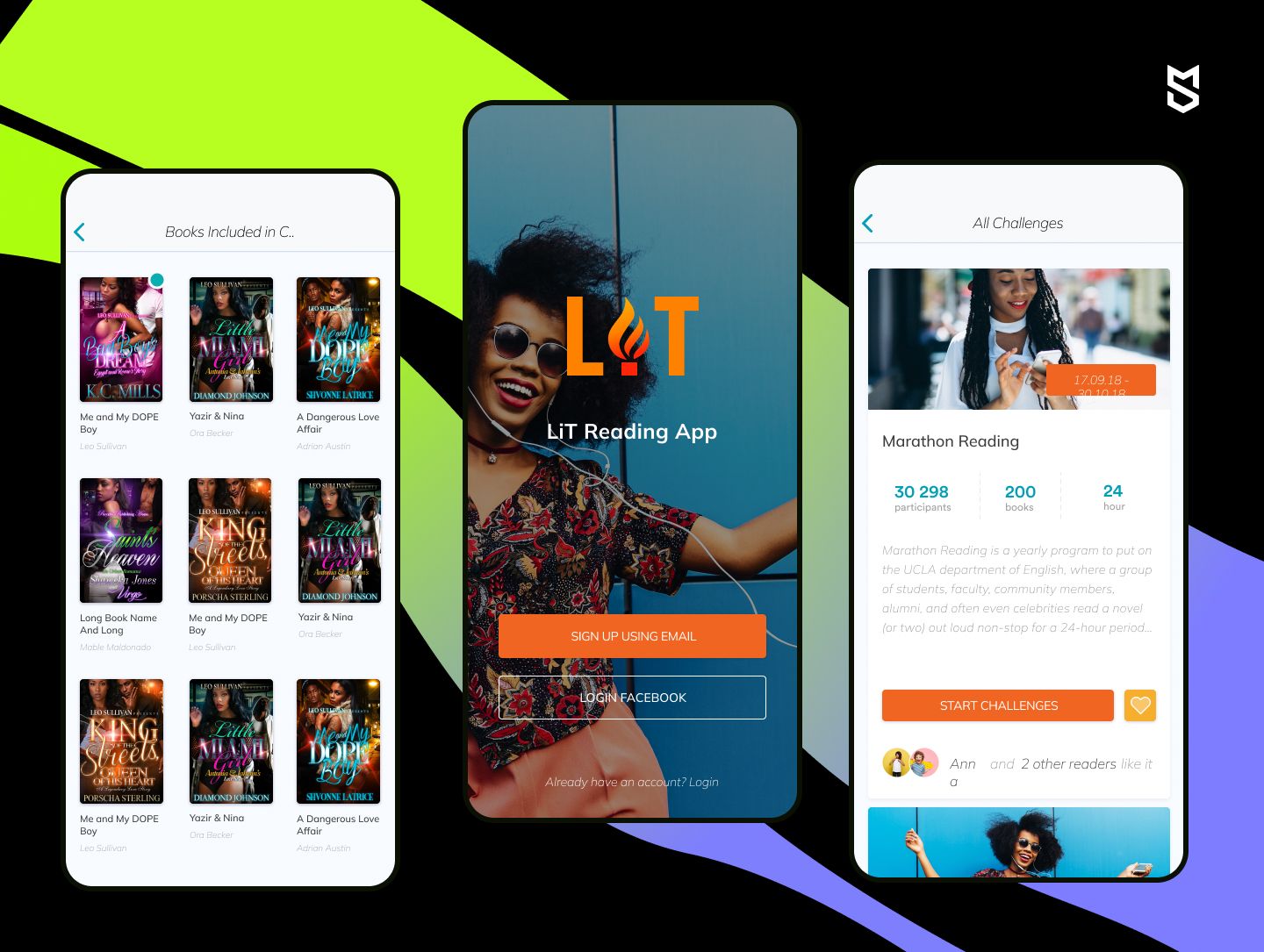
One of the projects Mind Studios had several years back was an app for a niche publishing house selling romance books by Black authors featuring Black protagonists. LiT was a unique project that covered the need for representation that was at the time lacking heavily.
We’ve created a full interface and rich functionality for LiT: at the MVP stage, the app had a store, user library, extensive list of ebook app features, in-app purchases, and more. At later stages of ebook mobile application development, we’ve also added several gamification features to increase engagement, created a special in-app currency, and implemented functionality to listen to audiobooks.
All in all, the LiT app was a full-fledged e-reader app similar to Kindle but for a niche market.
Reading app development: Conclusion
Reading apps attached to online ebook stores will continue to grow in market niches, being a convenient way for readers to find new reads in a particular niche and for indie authors and small publishing houses to earn revenue. While it’s challenging and requires a considerable investment of both time and money to launch an eReader startup, the possibility for profits is also not small.
At Mind Studios, we offer not only ebook reader app development, but also consulting services. If you have any questions about Kindle app development or how to make an ebook app for Android or iOS, we’ll gladly offer our experience. Hit us up via our contact form for a consultation and a quote.

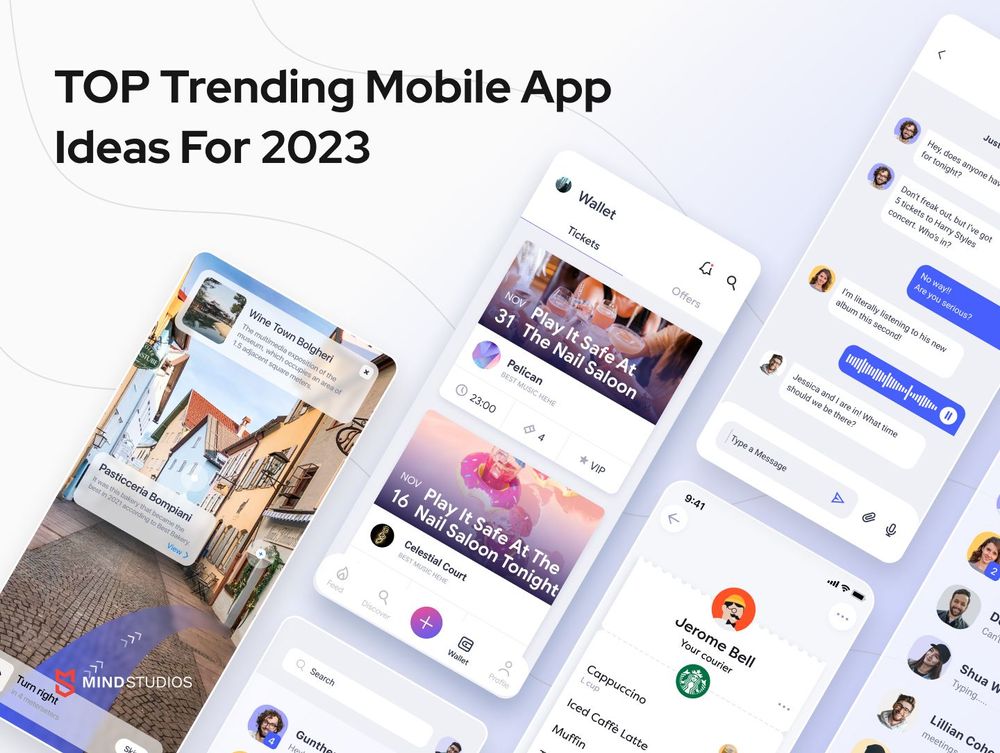
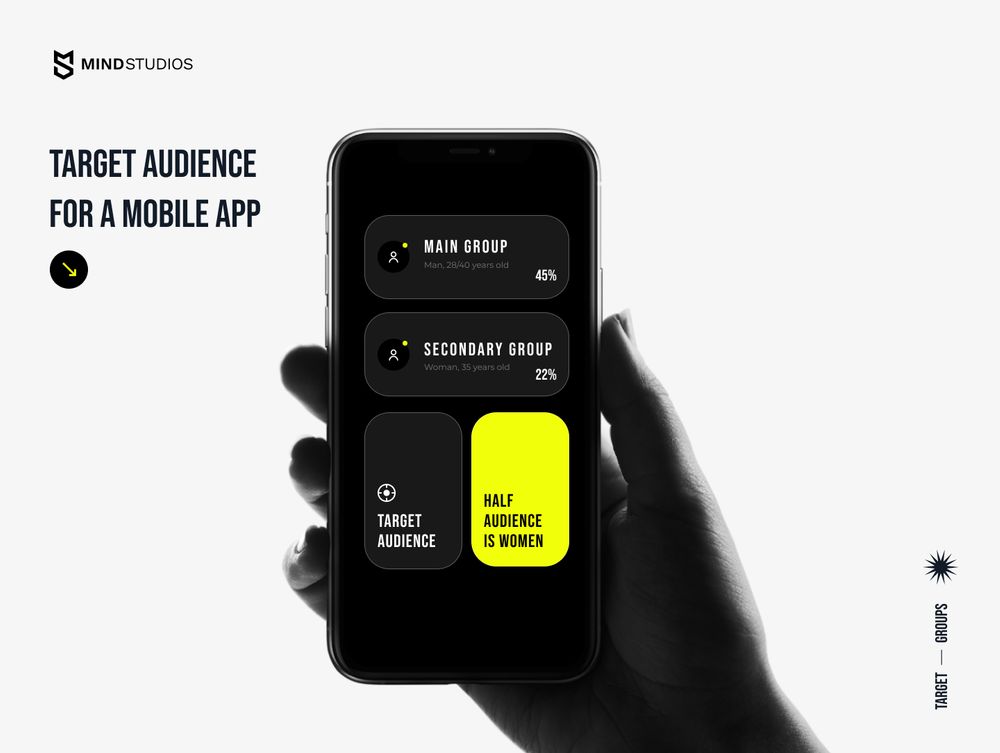
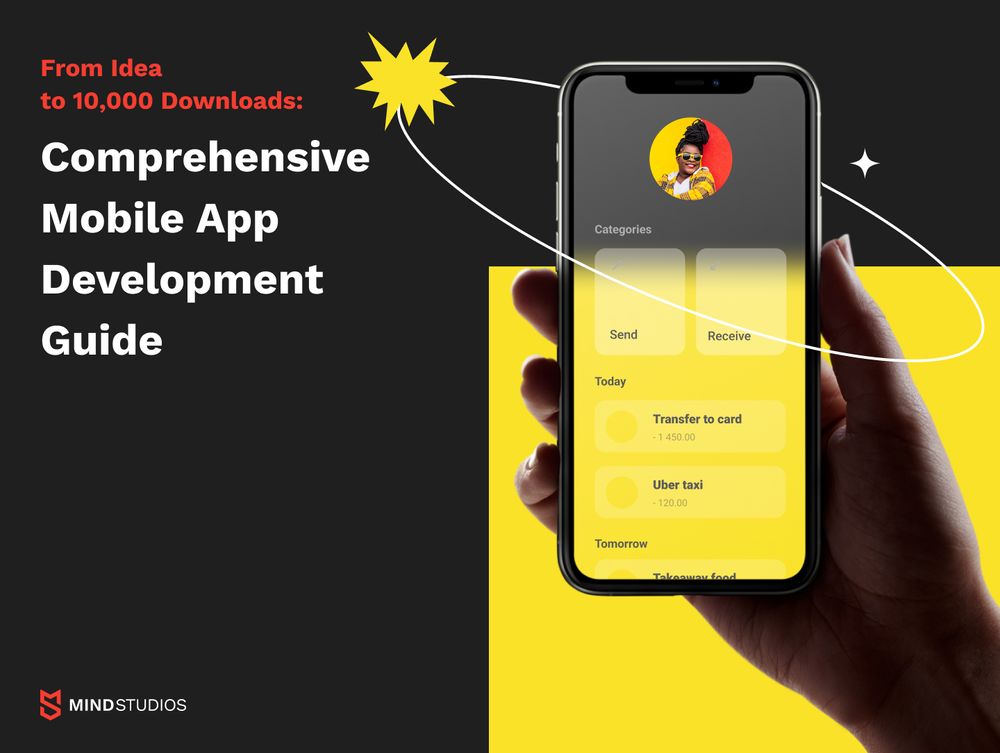

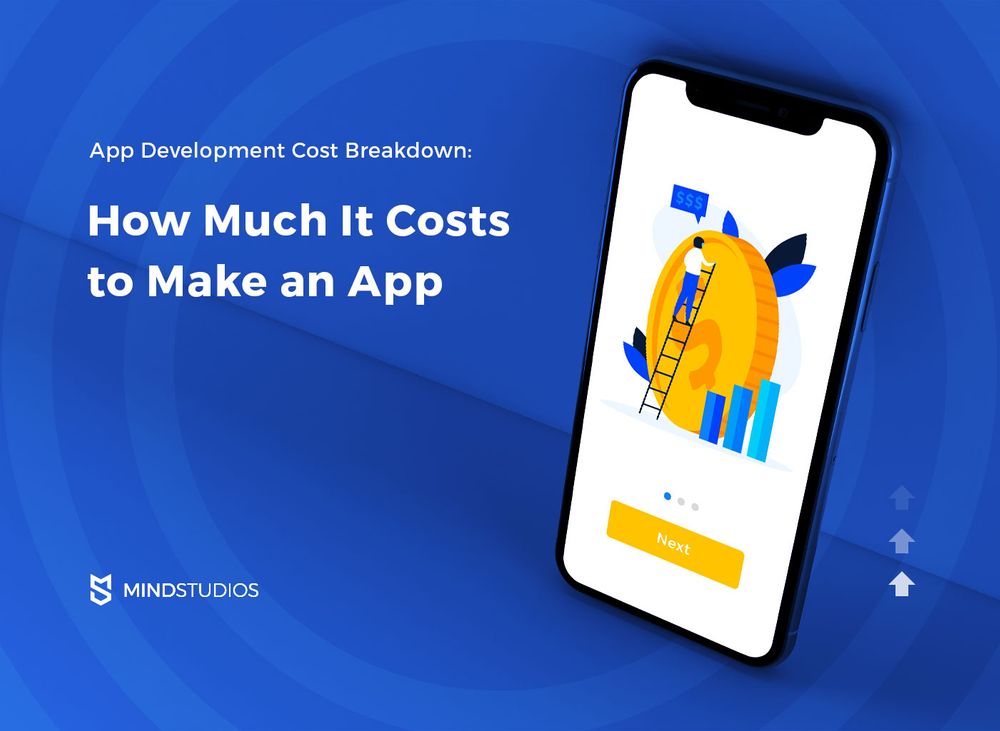
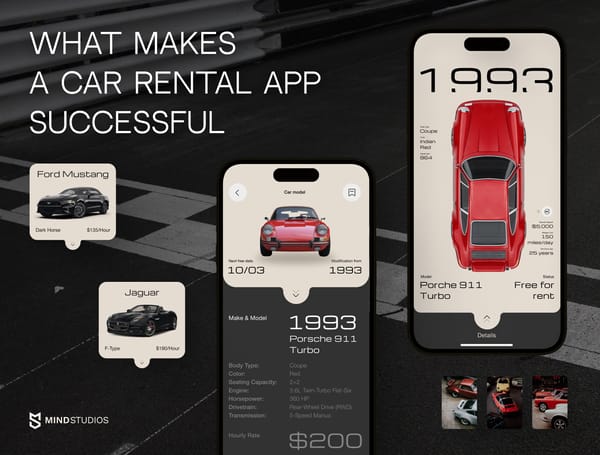
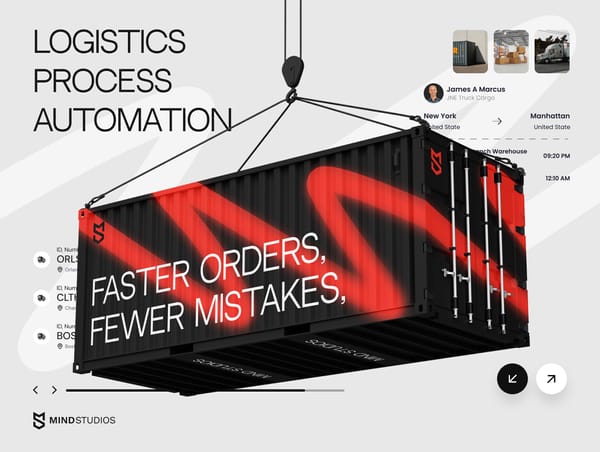
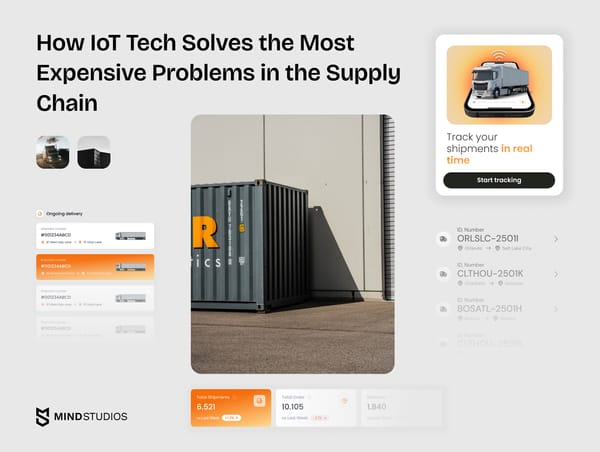
![How to Create an On-Demand Medicine Delivery App [Expert Guide]](https://themindstudios.com/blog/content/images/size/w600/2025/03/IMG-1-Cover-6.jpg)
